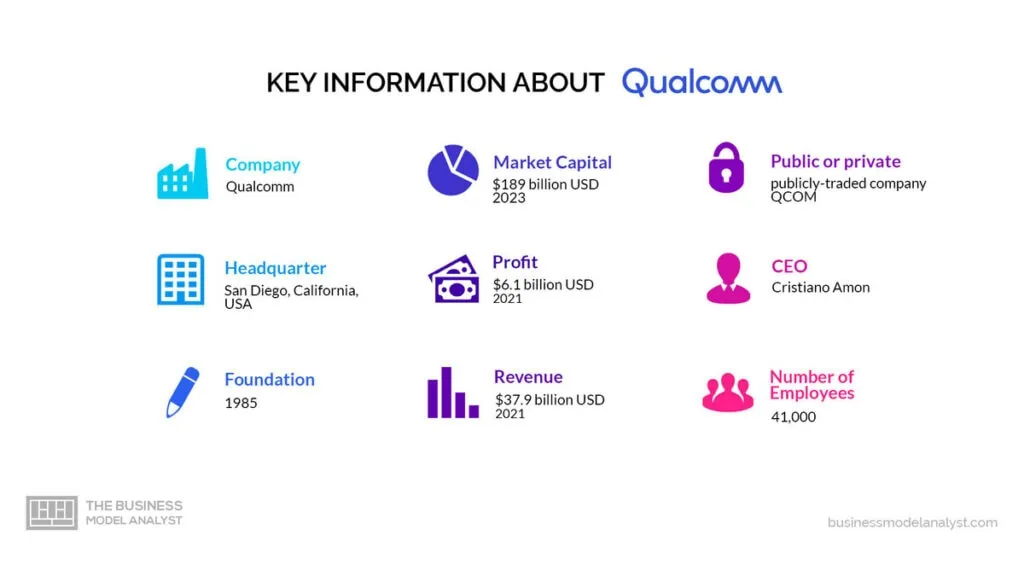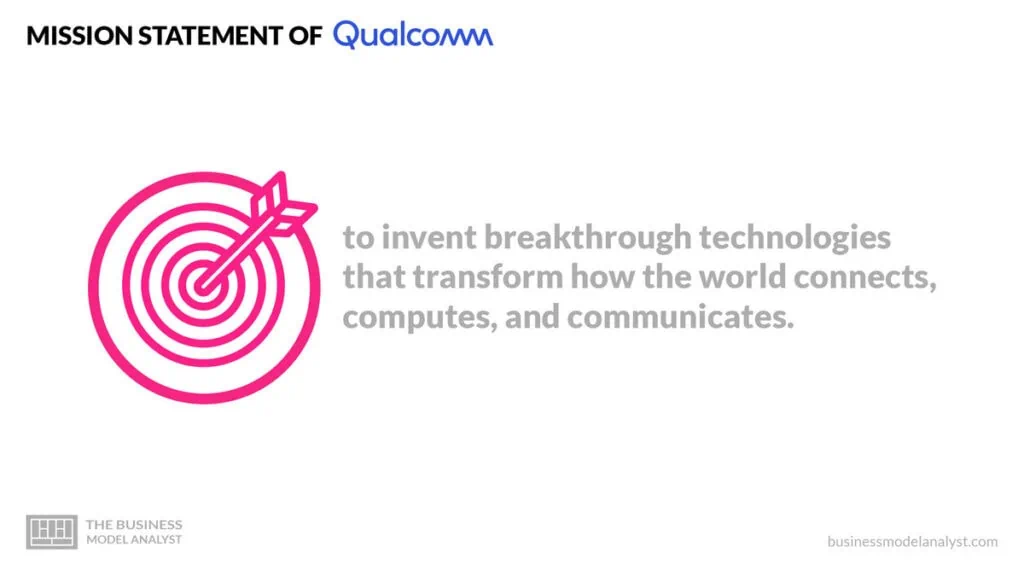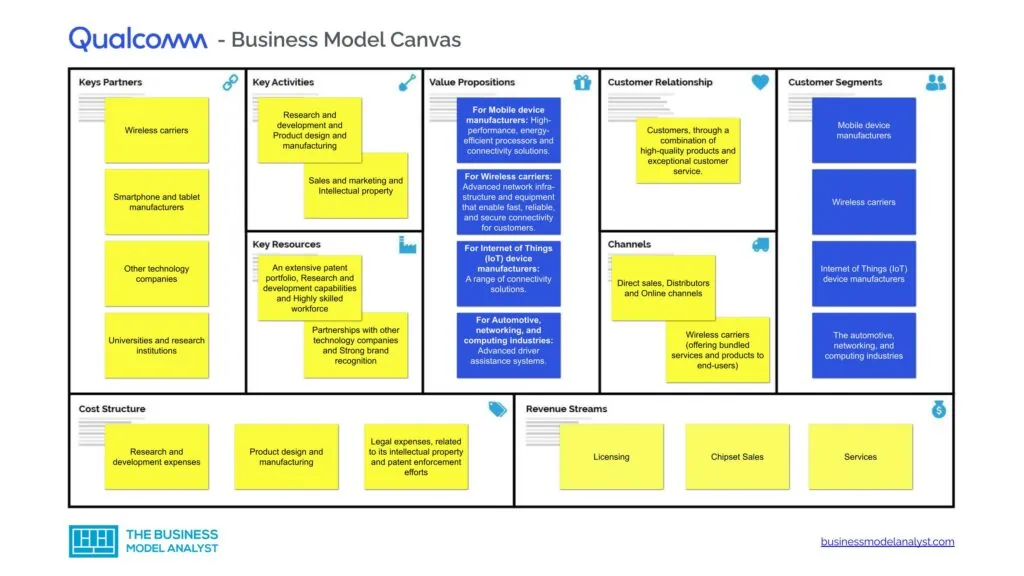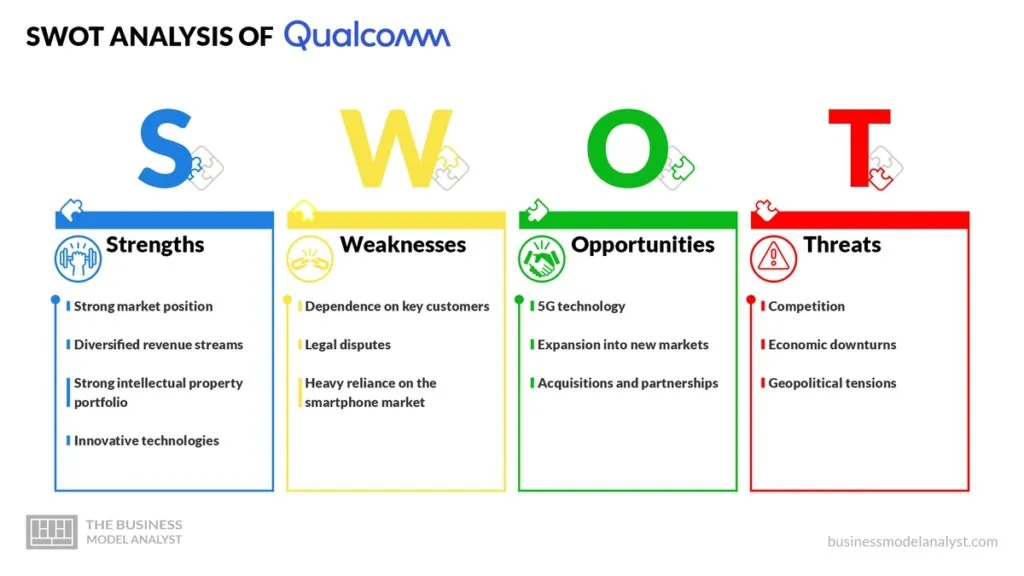The Qualcomm business model is centered around licensing its patented technology to other companies in the industry, which allows them to use the technology in their products. This licensing model has been a key driver of the company’s success over the years. Additionally, Qualcomm also sells chips that are used in mobile devices, as well as other products and services related to wireless technology.
Qualcomm is a leading American multinational corporation that specializes in designing and developing semiconductors, software, and services related to wireless technology. The company has been around since 1985 and has been a significant player in the wireless industry since then. Qualcomm’s business model is unique in that the company generates revenue from various streams, including licensing, chip sales, and technology services.
Furthermore, Qualcomm’s business model has been successful in generating revenue from multiple streams, which has allowed the company to remain a leader in the wireless industry. As technology continues to evolve, it will be interesting to see how Qualcomm adapts its business model to stay competitive and continue to drive innovation in the industry.

Contents
A brief history of Qualcomm
Qualcomm is an American multinational corporation that was founded in 1985 by Irwin M. Jacobs and six other co-founders. It started as a contract research and development company that focused on wireless technology. At the time, wireless technology was still in its infancy, and there was a lot of room for innovation and growth.
In 1989, Qualcomm launched its first commercial product, the OmniTRACS satellite communication system. Back then, trucking companies used this system to track and manage their fleets. It was a huge success and helped to establish Qualcomm as a significant player in the wireless industry.
Over the years, Qualcomm continued to innovate and develop new technologies. In the 1990s, the company developed CDMA (Code Division Multiple Access) technologies, which became the foundation for many of the world’s 3G and 4G networks. CDMA allowed for more efficient use of the wireless spectrum and better call quality.
In the early 2000s, Qualcomm began to focus on developing chips for mobile devices. The company’s Snapdragon line of processors quickly became some of the most popular chips in the industry. They were used in a wide range of devices, from smartphones and tablets to smartwatches and other wearables.
Today, Qualcomm is one of the largest semiconductor and telecommunications equipment companies in the world. It is known for its innovative technologies and its ability to stay ahead of the curve in the fast-paced world of wireless communications.
Who Owns Qualcomm
Qualcomm is a publicly traded company, meaning that its shareholders own it. As of 2023, the largest shareholders of Qualcomm are institutional investors such as The Vanguard Group, BlackRock, and State Street Corporation. These investors own large portions of the company’s outstanding shares and have significant influence over the company’s decisions.
However, Qualcomm’s co-founders Irwin M. Jacobs and Andrew Viterbi still hold a small percentage of the company’s shares and remain involved in the company’s operations. In addition, Qualcomm’s board of directors is responsible for overseeing the company’s management and making strategic decisions on behalf of the shareholders.
It’s worth noting that Qualcomm’s ownership structure has been the subject of some controversy in recent years. In 2018, Broadcom attempted to acquire Qualcomm in a hostile takeover bid, but the U.S. government ultimately blocked the proposed deal due to concerns over national security.
Despite this setback, Qualcomm remains a major player in the semiconductor industry and continues to innovate in areas such as 5G technology, artificial intelligence, and the Internet of Things. With a diverse range of products and services, Qualcomm’s business model is built on licensing its technology and selling semiconductors to a wide range of customers, from smartphone manufacturers to automotive companies.
Qualcomm Mission Statement

Qualcomm’s mission statement is “to invent breakthrough technologies that transform how the world connects, computes, and communicates.”
This statement emphasizes the company’s focus on innovation and creating new technologies that have a significant impact on the way people connect and communicate. It also highlights the company’s commitment to staying at the forefront of technological advancement and driving change in the industry.
How Qualcomm Works
Qualcomm is a semiconductor and telecommunications equipment company that designs and markets wireless telecommunications products and services. Its business model is based on inventing, sharing, and collaborating with other companies to create cutting-edge technology products and services.
The company’s main revenue streams come from its licensing business, QTL, and its semiconductor business, QCT. Qualcomm’s licensing business generates revenue by licensing its patents to other companies, while its semiconductor business designs and manufactures chips that are used in a wide range of electronic devices, including smartphones, tablets, and IoT devices.
Qualcomm’s business model is unique in that it focuses on developing and licensing its intellectual property to other companies, rather than manufacturing and selling its own products. This approach allows the company to focus on innovation and research and development, while also generating significant revenue from its intellectual property.
Qualcomm’s technologies are the building blocks for other companies to create the products and services that ultimately reach consumers. The company’s innovations have helped power the mobile revolution, and it continues to push the boundaries of what’s possible in the world of wireless telecommunications.
Qualcomm’s business model has been successful in large part because of its focus on collaboration and innovation. By working closely with other companies to develop new technologies and products, Qualcomm has been able to stay at the forefront of the wireless telecommunications industry and maintain its position as a leader in the field.
How Qualcomm Makes Money
Qualcomm generates revenue from two major subsidiaries: Qualcomm CDMA Technologies (QCT) and Qualcomm Technology Licensing (QTL). QCT derives its revenue from the sale of products and services, primarily from the sale of chips for mobile devices, automotive, and Internet of Things (IoT) applications. On the other hand, QTL generates its revenue from licensing fees for its intellectual property (IP) portfolio, which includes patents for CDMA, WCDMA, OFDMA, and other wireless technologies.
In 2021, Qualcomm generated $33.57 billion in revenue, with QCT accounting for $25.56 billion and QTL accounting for $7.01 billion. This was a significant increase from the previous year, where the company generated $23.53 billion in revenue, with QCT accounting for $16.97 billion and QTL accounting for $6.56 billion.
Qualcomm is a leading semiconductor and telecommunications equipment company that generates revenue through several income streams. Let’s take a closer look at how Qualcomm makes money.

Licensing
Qualcomm is best known for its licensing business, which generates the majority of the company’s revenue. The company licenses its technology to other companies, allowing them to use Qualcomm’s patented intellectual property in its products. Qualcomm earns a percentage of the price of every device sold that uses its technology. This income stream is particularly lucrative for Qualcomm because it allows the company to earn money without having to manufacture or sell its own products.
Chipset Sales
Qualcomm also generates revenue from the sale of its chipsets. The company designs and manufactures semiconductor chips used in smartphones, tablets, and other electronic devices. The chipsets incorporate a range of technologies, including processors, graphics, and modems. Qualcomm’s chipsets are used in devices made by many of the world’s largest smartphone manufacturers, including Samsung, LG, and Xiaomi.
Services
Qualcomm also provides a range of services to its customers. These services include software development, engineering support, and technical consulting. Qualcomm’s services are designed to help customers get the most out of the company’s chipsets and technologies. The revenue generated from services is relatively small compared to the company’s licensing and chipset sales, but it is an important part of Qualcomm’s overall revenue stream.
Qualcomm’s business model is unique in that it generates revenue from both the sale of products and services, as well as licensing fees for its IP portfolio. This allows the company to diversify its revenue streams and mitigate risks associated with fluctuations in demand for its products and services.
Qualcomm Business Model Canvas
The Qualcomm Business Model can be explained in the following business model canvas:

Qualcomm Customer Segments
Qualcomm customer segments consist of:
- Mobile device manufacturers
- Wireless carriers
- Internet of Things (IoT) device manufacturers
- The automotive, networking, and computing industries
Qualcomm Value Proposition
Qualcomm’s value propositions for its customer segments are:
For Mobile device manufacturers:
- High-performance, energy-efficient processors and connectivity solutions.
- Advanced features such as 5G connectivity, artificial intelligence, and high-quality cameras.
- Reliable and secure connectivity across a range of devices and applications.
For Wireless carriers:
- Advanced network infrastructure and equipment that enable fast, reliable, and secure connectivity for customers.
- Comprehensive software solutions that optimize network performance and enhance user experience.
- Intellectual property and licensing opportunities that generate revenue and enable differentiation.
For Internet of Things (IoT) device manufacturers:
- A range of connectivity solutions, including modems, Wi-Fi, Bluetooth, and cellular technologies.
- Energy-efficient processors and software development kits (SDKs) that enable efficient and reliable operation of IoT devices.
- Intellectual property and licensing opportunities that enable differentiation and generate revenue.
For Automotive, networking, and computing industries:
- Advanced driver assistance systems (ADAS) and connectivity solutions that enable safer and more efficient operation of vehicles.
- Networking solutions that enable fast, reliable, and secure connectivity for enterprises and service providers.
- High-performance processors and software solutions that enable efficient and reliable operation of computing systems.
In essence, Qualcomm’s value propositions are centered around delivering high-performance technologies, enabling advanced features and applications, providing reliable and secure connectivity, leveraging its intellectual property portfolio, and driving innovation through R&D, tailored to the specific needs of each customer segment.
Qualcomm Channels
Qualcomm channels consist of:
- Direct sales
- Distributors
- Online channels
- Wireless carriers (offering bundled services and products to end-users)
Qualcomm Customer Relationships
Qualcomm customer relationships consist of:
- Customers, through a combination of high-quality products and exceptional customer service.
Qualcomm Revenue Streams
Qualcomm revenue streams consist of:
- Licensing
- Chipset Sales
- Services
Qualcomm Key Resources
Qualcomm key resources consist of:
- An extensive patent portfolio
- Research and development capabilities
- Highly skilled workforce
- Partnerships with other technology companies
- Strong brand recognition
Qualcomm Key Activities
Qualcomm key activities consist of:
- Research and development
- Product design and manufacturing
- Sales and marketing
- Intellectual property
Qualcomm Key Partners
Qualcomm key partners consist of:
- Wireless carriers
- Smartphone and tablet manufacturers
- Other technology companies
- Universities and research institutions
Qualcomm Cost Structure
Qualcomm cost structure consists of:
- Research and development expenses;
- Product design and manufacturing;
- Legal expenses, related to its intellectual property and patent enforcement efforts.
Qualcomm Competitors
Qualcomm has several competitors in the semiconductor and wireless communication industries. Some of its main competitors include:
- Intel Corporation: Intel is one of the biggest competitors to Qualcomm in the semiconductor industry, and the two companies have competed fiercely in the market for mobile processors. Intel has historically had a relatively small market share in the mobile processor market compared to Qualcomm, but the company has been working to increase its presence in the industry in recent years;
- Broadcom Inc: Broadcom is a semiconductor company that produces a variety of products, including Wi-Fi and Bluetooth chips, as well as processors for mobile devices;
- MediaTek, Inc.: MediaTek is a semiconductor company that specializes in producing mobile processors and wireless communication technologies for smartphones and other devices. MediaTek is a major competitor to Qualcomm in the market for mobile processors, particularly in the mid-range and budget segments of the market;
- Samsung Electronics: Samsung is a multinational electronics company that produces a wide range of products, including mobile devices and semiconductors. Samsung competes with Qualcomm in the market for mobile processors, and the two companies have a long history of competing in this space;
- Apple Inc: Apple is a technology company that produces a range of products, including smartphones and tablets, and designs its own processors for use in its devices. Apple is a significant competitor to Qualcomm in the market for mobile processors, as the company designs its own processors for use in its iPhones and iPads. Apple has been reducing its reliance on Qualcomm’s modems in recent years, instead using its own modems in some of its devices.
These companies compete with Qualcomm in various areas of their business, including the design and manufacturing of semiconductors and wireless communication technologies.
Qualcomm SWOT Analysis
Below, there is a detailed swot analysis of Qualcomm:

Qualcomm Strengths
- Strong market position: Qualcomm is a market leader in wireless communication technologies and mobile processors, with a significant market share in both areas;
- Diversified revenue streams: The company generates revenue from both hardware sales and patent licensing fees, making it less reliant on any single product or customer;
- Strong intellectual property portfolio: Qualcomm has a large portfolio of patents related to wireless communication technologies, which generates significant royalty revenue;
- Innovative technologies: The company invests heavily in research and development, which has led to the development of new and innovative technologies that have helped it stay competitive.
Qualcomm Weaknesses
- Dependence on key customers: While Qualcomm has a diverse range of customers, a significant portion of its revenue is derived from a few key customers, making it vulnerable to changes in their demand or purchasing patterns;
- Legal disputes: The company has been involved in several high-profile legal battles, including patent infringement lawsuits and antitrust investigations, which can be costly and time-consuming;
- Heavy reliance on the smartphone market: Qualcomm’s revenue is heavily dependent on the smartphone market, which is a mature and highly competitive industry.
Qualcomm Opportunities
- 5G technology: The transition to 5G technology presents a significant opportunity for Qualcomm, as it is well-positioned to benefit from the increased demand for its wireless communication technologies and processors;
- Expansion into new markets: Qualcomm has the opportunity to expand into new markets, such as the Internet of Things (IoT), automotive, and industrial sectors;
- Acquisitions and partnerships: The company can pursue strategic acquisitions or partnerships to expand its product offerings or enter new markets.
Qualcomm Threats
- Competition: Qualcomm faces intense competition from other semiconductor and wireless communication companies, which could erode its market share and profitability;
- Economic downturns: Economic downturns could lead to a decrease in demand for Qualcomm’s products and services;
- Geopolitical tensions: Tensions between countries and regions where Qualcomm operates could impact its business operations and revenue.
Conclusion
Qualcomm is a leading technology company that has been successful in manufacturing and marketing various products to businesses and consumers. The company’s business model has shifted towards offering a wider range of products and services, which has resulted in revenue growth and positive earnings in recent years.
Qualcomm’s multi-product model has allowed the company to produce several products and market them separately. This approach has been successful in the wireless industry, where Qualcomm has been able to develop and enable foundational technologies that have taken a decade or more to solve.
Qualcomm’s revenue streams are diverse, with the company deriving most of its revenue from licensing its patents and collecting royalties from its customers. The company also generates revenue from the sale of chips and other products, as well as from providing services to businesses and consumers.
Moreover, Qualcomm’s business model has been successful in the wireless industry, and the company continues to innovate and develop new technologies to maintain its position as a leader in the market. With its multi-product model, diverse revenue streams, and commitment to innovation, Qualcomm is well-positioned to continue to grow and succeed in the years to come.

